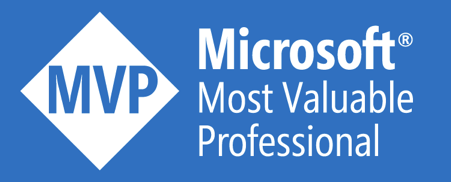The yearly INTEGRATE conference in London is a much-anticipated event that brings Microsoft integration enthusiasts together to explore the latest trends and technologies. This year’s edition, held over two days, featured two tracks for attendees to choose from. Alongside classic integration topics like Logic Apps, Azure Messaging and API Management, the conference also introduced the latest AI capabilities offered by the Microsoft platform.
Here’s a SWOT analysis based on the sessions I attended.
Strengths
Azure Logic Apps Agent Loop
I’ve explored numerous AI features across the Microsoft ecosystem, and the Azure Logic Apps Agent Loop feature has impressed me the most. Its design leverages the rich Logic Apps connector base, provides clear visibility into the agent’s processes and includes promising features on the roadmap, such as on-behalf-of authentication for connectors. Additionally, its reliance on Azure AI Foundry is a smart architectural decision. Definity check out the announcement.
MCP Servers
The MCP protocol allows to wire up your AI agents easily with your various systems. MCP servers can be often a protocol layer on top of your existing API infrastructure. So if you already invested in a well-structured API layer, creating an MCP server in Azure API Management will be a simple thing to do. More info can be found here. In case you need to stitch multiple systems together, the new MCP server creation feature in Logic Apps might be a better choice, but it’s still in private preview.
Event Grid’s MQTT broker
Azure Event Grid will soon support two important features: MQTT Retain (no announcement found online) and MQTT Last Will and Testament (more info here). These protocol upgrades help to support industrial concepts like Unified Namespace with Spark Plug B.
RPO zero for Azure Messaging
The geo-replication feature within Azure Event Grid, Event Hubs and Service Bus is very soon hitting General Availability. When you choose for synchronous replication towards a secondary region, you can realize an RPO of zero, however accepting a slight performance hit. You can also opt for asynchronous geo-replication, which has a lower performance impact, but higher RPO. A nice addition for enterprise-grade customers. More info here.
Weaknesses
Data mapper
Despite being a core integration feature, data mapping is still not at the maturity level it should be. Way too many times, we need to introduce old-school XSLT or custom .NET code for rather simple transformations. However, on the bright side, it’s good to see that Microsoft is aware of this and continues to invest in this area. The latest improvements are listed here.
Product team alignment
There is too little alignment between the different product teams, when it comes to gen AI. For example, both Logic Apps and Azure API Management have capabilities to build an MCP server, while a unified approach would bring more value. Many product teams are building similar AI features in different ways, each wanting a piece of the gen AI cake.
Opportunities
On-premises integration
The introduction of new in-process Kafka and RabbitMQ connectors for Logic Apps hybrid is a great move, allowing connectivity to popular on-premises messaging systems. Together with the Logic Apps Hybrid feature, that allows to run Logic Apps anywhere and manage them from within the Azure portal, this opens up a new range of hybrid integration capabilities. More info on the hybrid integration story can be found in this announcement.
Logic Apps’ developer experience
Developers often dislike the drag-and-drop experience of Logic Apps. The new inline code snippets, custom code in .NET8 and code full workflows (relying on durable functions and the Logic Apps connector framework as a strongly-typed .NET SDK) are promising improvements. Looking forward to give the latter a try.
Logic Apps’ testing framework
Designed using .NET test projects, this framework allows the creation of tests from run history, which is very powerful. You can update the static mocks by injecting dynamic behavior to simulate various scenarios. A slick way to test your integrations, while not always being able to have all your backend systems available. More info here.
Standardization in the messaging space
Clemens Vasters is quite active on the standards and specifications front: he contributed to the CNCF CloudEvents and CNCF xRegistry specifications. Now, he is working on the JSON structure spec, to fix JSON schema’s broken type system. Definitely have a look over here: https://json-structure.org/ All these efforts are leading to (hopefully) new standards for describing messages and events. An initiative that will also assist in gen AI, because LLMs work optimally when well-structured metadata is available.
Threats
Logic Apps consumption
All new investments are focused on Logic Apps Standard. The product team has posted a survey on the usage reasons for Logic Apps consumption. For me, those are small indications that this service might get deprecated in the future.
AI Features in preview
Many new AI features are still in preview. To build reliable production-ready solutions, we need software that has reached general availability. Given the rapid pace of AI development, it’s logical that new features first arrive in preview. We still need to be a bit patient, but will already start to give these AI features a try.
Conclusion
The INTEGRATE 2025 conference was a fantastic event that showcased significant enhancements in Microsoft’s integration and AI capabilities. While there are areas for improvement, the opportunities and strengths highlighted promise an exciting future for integration enthusiasts.
Remember: sharing is caring!












